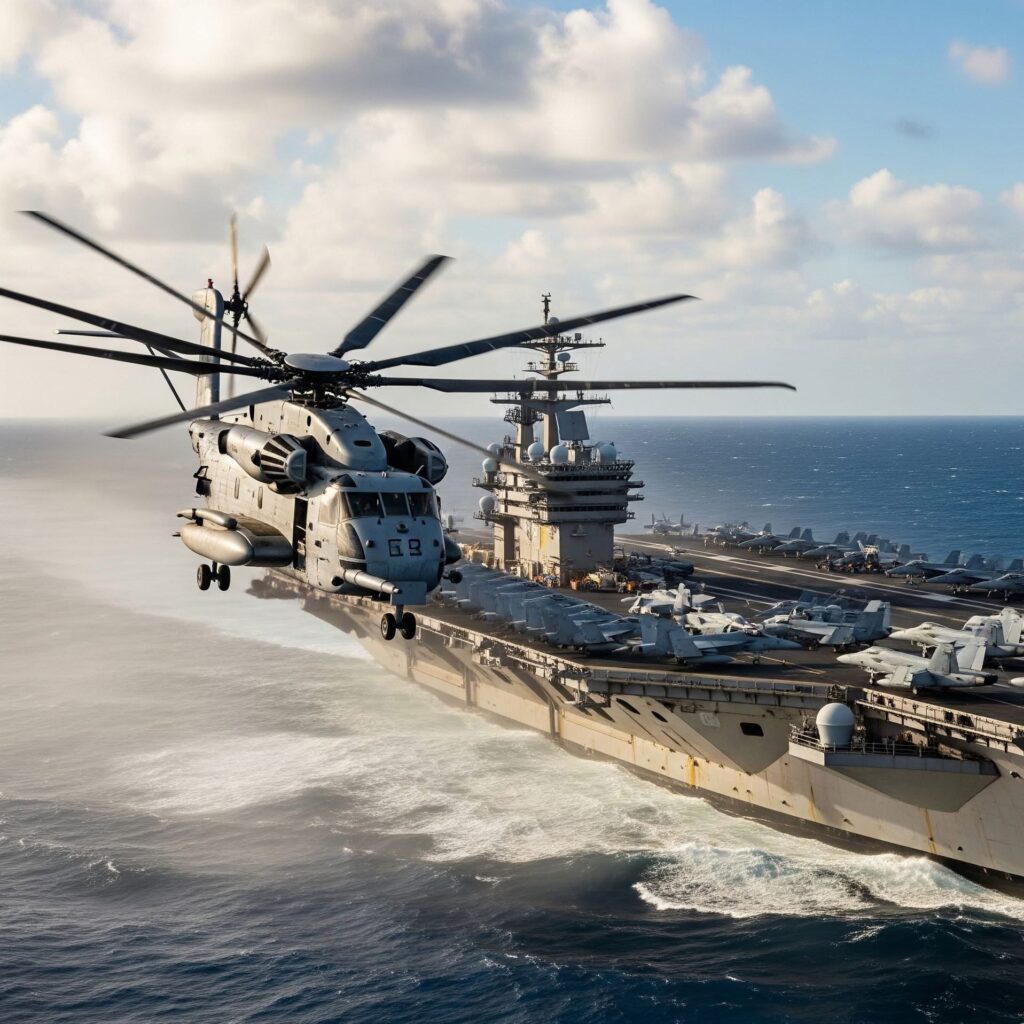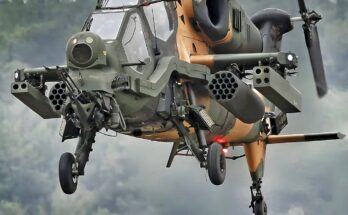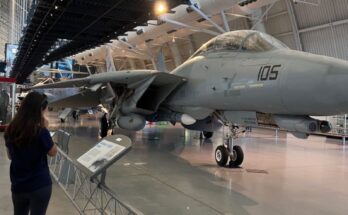
Stage 1:The thundering roar of rotor blades cuts through the sea air as a CH-53K King Stallion, the United States Marine Corps’ newest heavy-lift helicopter, flies low over the massive deck of the USS Gerald R. Ford (CVN-78). It is a scene that captures both the evolution of naval aviation and the enduring power projection of the U.S. military. The King Stallion, with its immense size and strength, complements the most advanced aircraft carrier in the world, a pairing that symbolizes American sea power in the 21st century.
The CH-53K King Stallion is the largest and most powerful helicopter ever built for the U.S. military. Capable of lifting external loads of more than 27,000 pounds, it easily outperforms its predecessor, the CH-53E Super Stallion. With three massive engines, fly-by-wire controls, and a wider cabin, the King Stallion can transport heavy vehicles, artillery, and troops over long distances. This makes it an indispensable asset for the Marine Corps, especially in amphibious operations launched from carriers and amphibious assault ships. Its presence over the Gerald R. Ford underscores how naval aviation is no longer limited to fast jets alone—it includes a diverse range of aircraft designed to support operations across the spectrum of warfare.
Below the hovering helicopter lies the Gerald R. Ford, the lead ship of the Ford-class supercarriers. Commissioned in 2017, it represents the cutting edge of carrier technology, boasting an electromagnetic aircraft launch system (EMALS), advanced arresting gear, a redesigned flight deck, and increased automation. With a displacement of around 100,000 tons, it towers as the largest warship afloat, capable of carrying more than 75 aircraft and sustaining operations for months at sea. Its flight deck, stretching over 1,000 feet, provides a dynamic stage for the movements of aircraft both fixed-wing and rotary.
The synergy between the CH-53K and the Gerald R. Ford reflects the military’s focus on joint interoperability. In a real-world mission, the King Stallion might deliver critical cargo, vehicles, or humanitarian supplies directly to the carrier or to nearby ships. It could also insert Marines ashore during expeditionary operations, bringing in troops and equipment where runways do not exist. For humanitarian assistance and disaster relief, the combination of a carrier’s medical facilities, logistics support, and the King Stallion’s massive lift capability could provide life-saving aid rapidly to stricken regions.
Watching the King Stallion fly low over the Ford is also a reminder of tradition and progress. The Super Stallion, which served for decades, was often seen hovering above carriers and assault ships during exercises and combat deployments. Now, the King Stallion inherits that role, updated for the challenges of tomorrow—whether that means great power competition in the Pacific, crisis response in the Middle East, or disaster relief in the Caribbean.
As the helicopter banks over the carrier, its rotor wash ripples across the deck, causing sailors to brace against the wind. The moment captures the essence of modern naval aviation: raw power, seamless coordination, and technological dominance. The CH-53K King Stallion over the USS Gerald R. Ford is not just a striking image—it is a glimpse into the future of American sea and air power.


